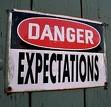Recommendations for Negotiation Strategy

"Shorten your sales cycle & increase your win rate through competitive excellence"
Editor’s note: Stu Schlackman is a regular guest contributor to this blog.
Preparation for any negotiation requires a thoughtful strategy if we are to achieve the desired outcome. I refer to Robert Menard, author of You’re the Buyer-You Negotiate it! He cites three points of a good negotiation plan.
The 3 Points
- Where are you now? What is your advantage and what are your costs? ”
- Where are you going? What is the outcome you expect from the negotiation? The rabbit in Alice in Wonderland, asks Alice where she wants to go? Alice replies, “I don’t know,” to which the rabbit responds, “Then any road will take you there.”
- How are we going to get there? Tthis controls your negotiation strategy and sets the stage for the game of “Ping Pong”, known as demand and concession in negotiation terms.
An integral part of negotiation is the determination of those items of product, service, warranty and price that we can concede and those points which we cannot. Let’s examine three recommendations that will help move the negotiation down a smoother path to success.
 Recommendation #1–
Recommendation #1–
Establish expectations. What are you not willing to concede? Where does the majority of your profit come from and how will you protect it?
If you considered buying hybrid Prius at 45 mpg when gas was $4/gallon, the wait for delivery was three months! The salesman may even have stated that “Our price is non-negotiable”.
One might expect that statement with short supply and high demand. This is an upfront exclusion from the negotiation. The announcement is that this point is not up for discussion. It’s like telling you fiancée before you set the wedding date, by the way “I don’t do windows”. Establishing expectations will save time and narrow down those points that can be negotiated.
Recommendation #2–
Know your concession strategy. What have you experienced in a similar situation? Will the client perceive what you concede as value and will it bring you closer to an agreement? Put yourself in the client’s position. Do they see your concessions providing tangible benefits that would impact their business in a positive way?
Recommendation #3
If it ain’t worth nuttin’ to you, it ain’t worth nuttin’ to nobody. The client wants to see that you’ve made a sacrifice which is of value. We also want to give the reason and logic behind what we concede so it doesn’t come across like we’re giving away the farm. Once you give a concession you need to tie it to a counter demand which is asking the client to concede to what you’re asking in return. For instance, if the client demands a 5% discount and an extra 90 days on the warranty, you can acquiesce by saying you will agree if they will provide the PO by Friday and that there are no more demands. It’s a matter of give and take to gain a mutual agreement where both parties view the agreement as a Win-Win.
Establishing expectations, know what you can and cannot concede, show some pain, and tie your concession to a counter demand. These recommendations will help shorten your sales cycle and increase you chance of success for both you and the customer. Good selling!